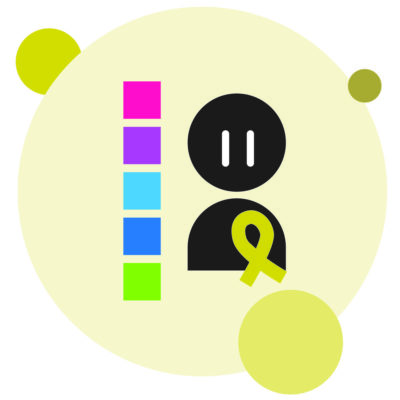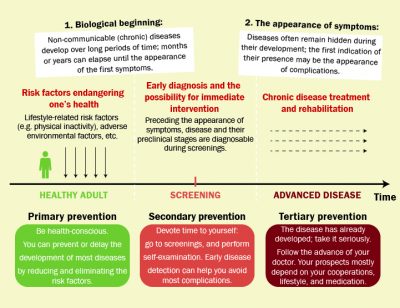 You take your car there… But when was your last “technical inspection”?
You take your car there… But when was your last “technical inspection”?
Countless “time bombs” are being produced in our body on a daily basis. These could be communicable or non-communicable diseases, acute or chronic ones with or without immediate symptoms. Therefore our role in their prevention and treatment is clearly crucial. Supporting our immune system is pivotal if we wish to preserve our health; we need to have a healthy diet, do regular physical exercise, manage stress, cut down on alcohol, refrain from smoking, get enough quality sleep, and take up the necessary vaccines. Fortunately, most timely diagnosed diseases are curable, and can become asymptomatic if treated appropriately.
There are three main tools at our disposal that can help us reduce the risk of diseases and their complications to a minimum:
- having a health-conscious lifestyle,
- paying attention to our body’s signals and performing the prescribed self-examinations,
- taking part in relevant health screenings.
Screening, check-up, risk factor – what are they about?
Screenings take place in asymptomatic periods, depending on age, sex, family anamnesis, and other risk factors. Invisible illnesses, among them non-communicable (chronic) diseases and their antecedent causes can be timely uncovered during scheduled screenings. Prescribed screenings are important since chronic diseases are mostly asymptomatic in their early stages, and only cause pain and visible symptoms later on.
Health checks (or medical examinations) serve the purpose of identifying the underlying causes of existing symptoms. In these instances the doctor schedules the examinations depending on the urgency and severity of the individual cases.
Risk factors are physical characteristics, habits, environmental factors, and social circumstances that increase the likelihood of developing a particular disease. Many of these risks can be mitigated in our lives, while others (e.g. our age) cannot be influenced.

Treating chronic diseases (cardiovascular, metabolic, respiratory, and mental diseases, as well as cancers) often requires lifelong medication, and always necessitates changes to one’s lifestyle. Most screenings aim to identify the above-mentioned disease types; however, detecting certain diseases is not possible due to the lack of efficient screening tools. Therefore paying attention to our body’s signals is highly important.
Recommendations for people of all age groups
- Conducting family anamnesis, identifying risk factors
- Identifying risk factors connected to one’s lifestyle
- Conducting physical examination
- Hypertonia assessment
- Screening for carbohydrate metabolism disorder
- Screening for lipid metabolism disorder
- Cardiovascular risk assessment
- Oral cavity screening
- Depression screening
- Melanoma prevention, self-examination of birthmarks, early recognition of melanoma
Recommendations for people in risk groups
- Colorectal cancer screening
- Cervical cancer screening, prevention by vaccination
- Breast screening, self-examination
- Screening for COPD
- Screening for chronic kidney disease
- Eye examination
- Hearing assessment
- Screening for osteoporosis
- Lung screening
- Prostate examination, screening for prostate cancer
- Testicular self-examination
You can find more personalized recommendations in our book Health to Go.
The list of preventive and early diagnostic health care services and screenings available in the framework of compulsory health insurance is included in the 51/1997 NM decree.
You can find more information about the importance and the process of colorectal screening in the National Public Health Center’s publication.
Further information on the topic can be found on the page below.
You can find more information about the prevention of HPV and cervical cancer in the National Public Health Center’s publication.
For more information you can visit the site below.
Graphics: Health Promotion Center